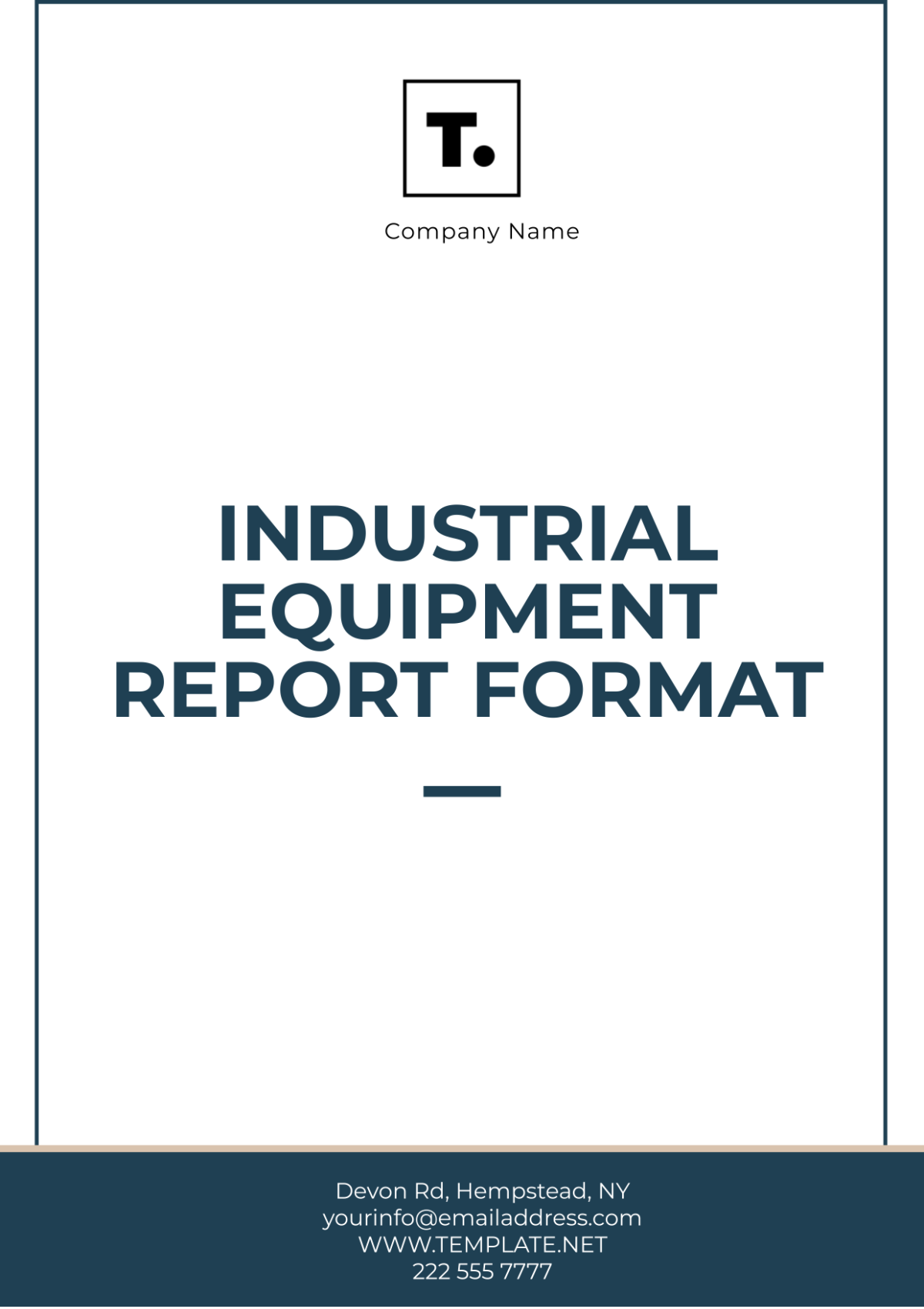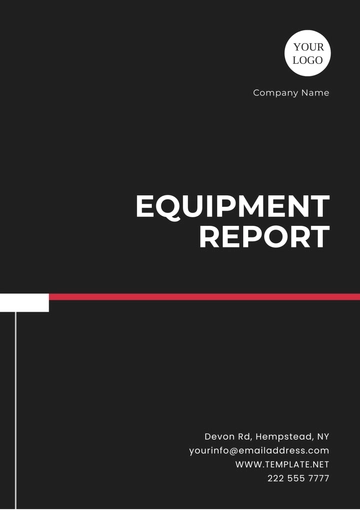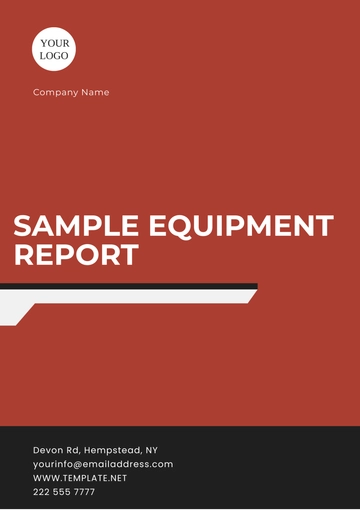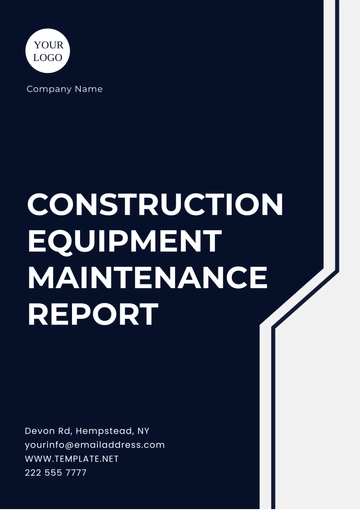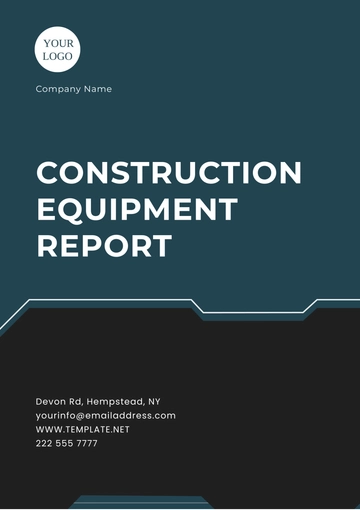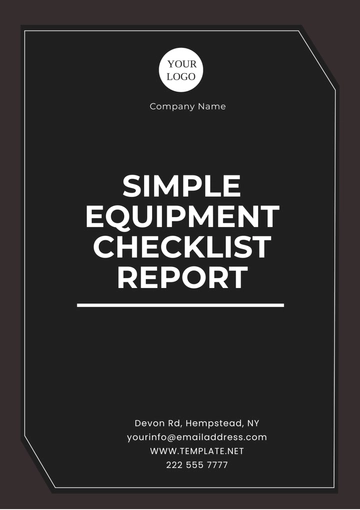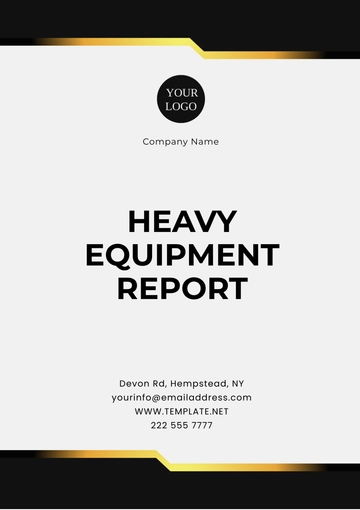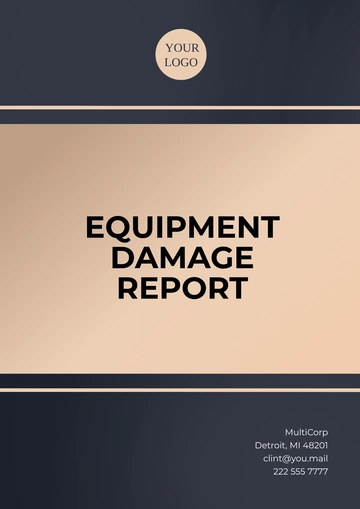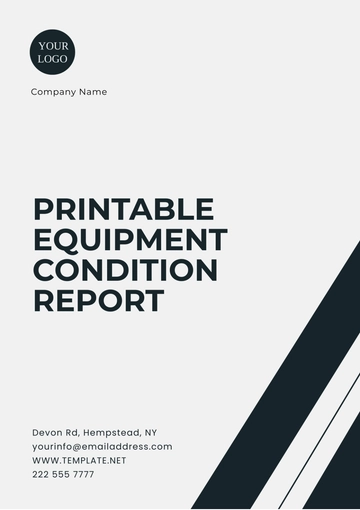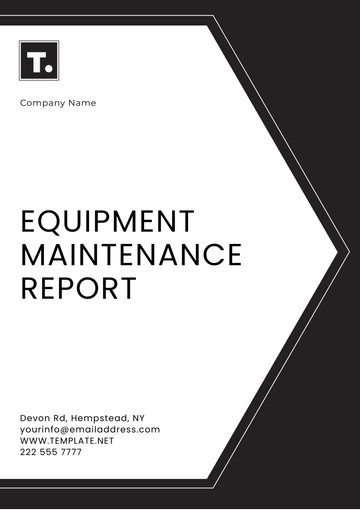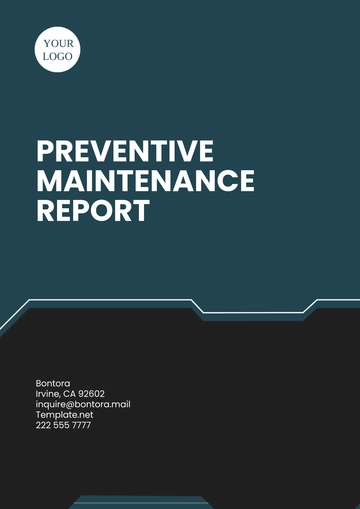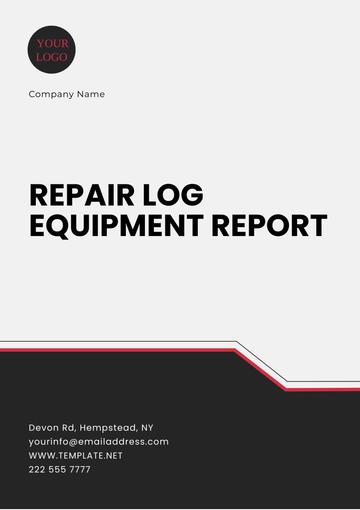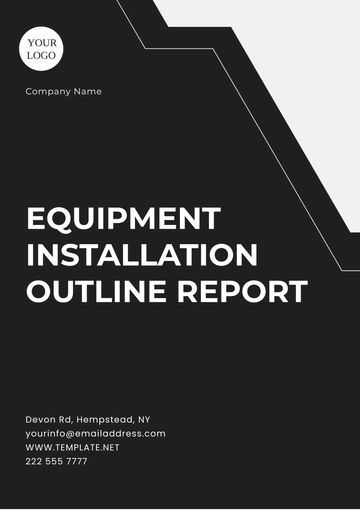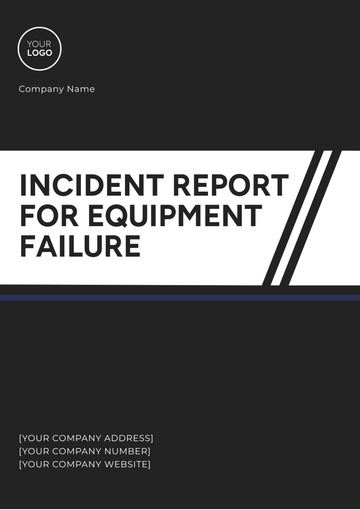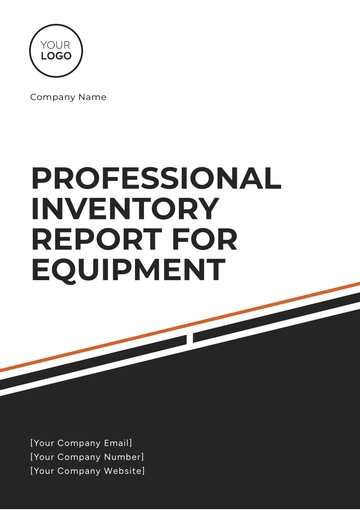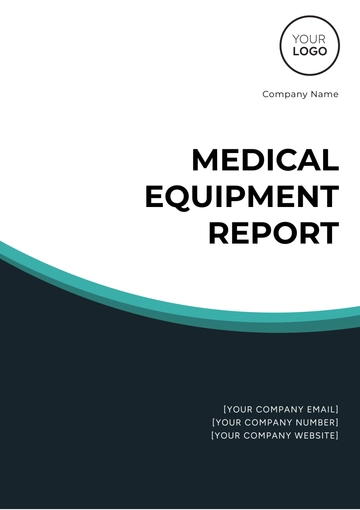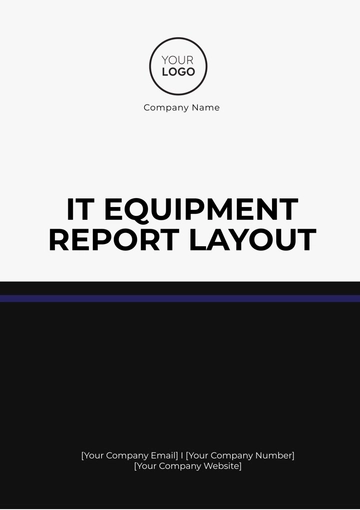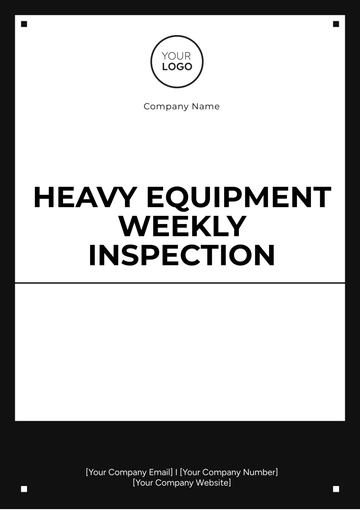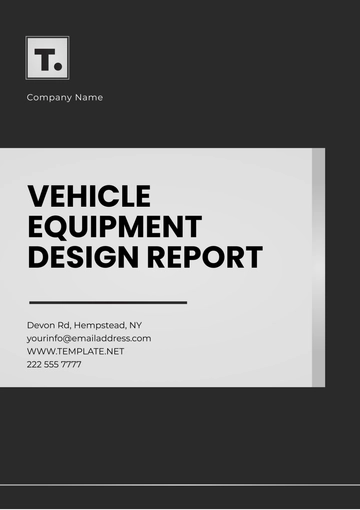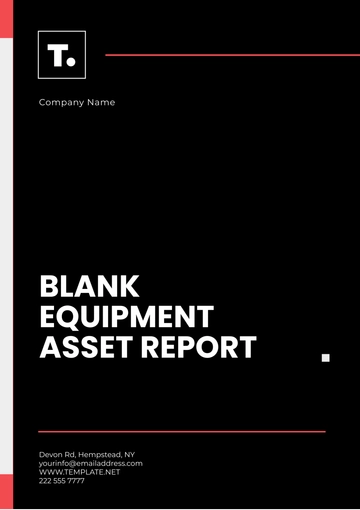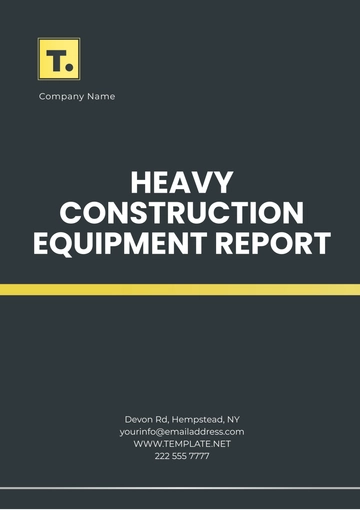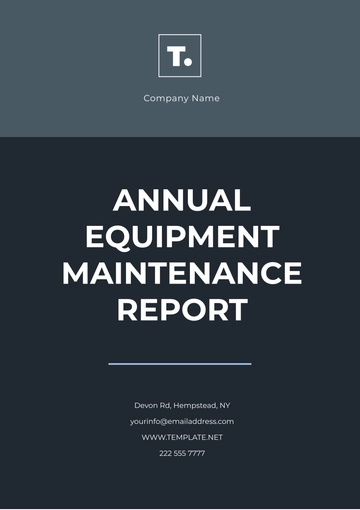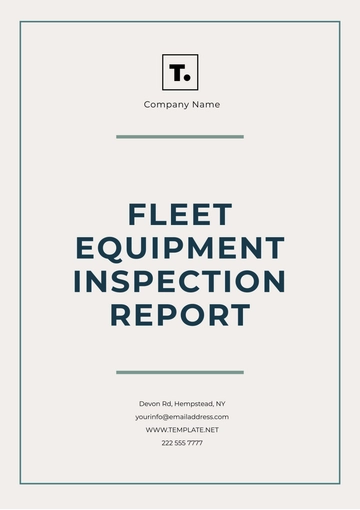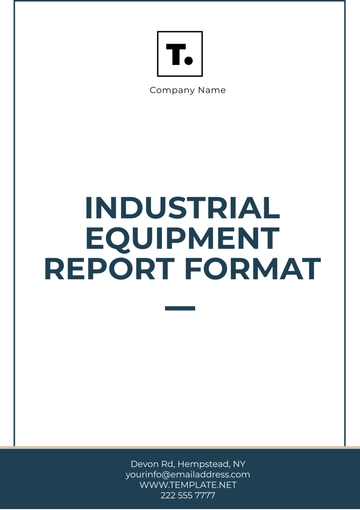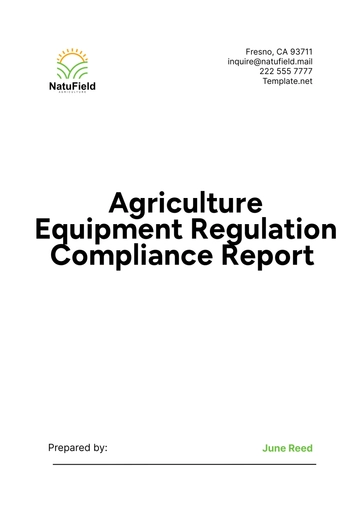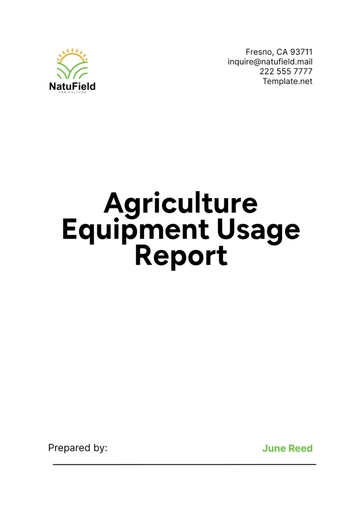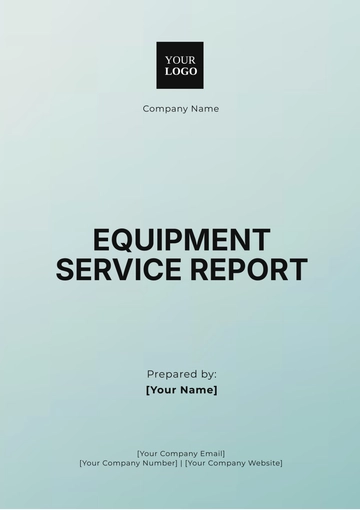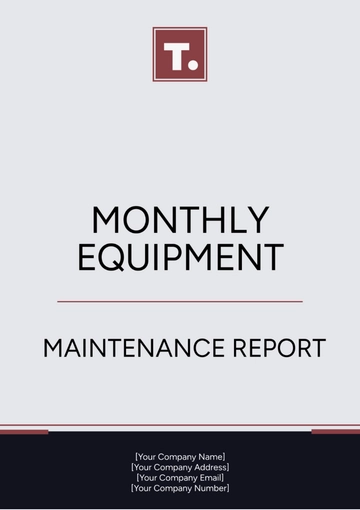Industrial Equipment Report Format
1. Report Title
Title: Comprehensive Report on [Equipment Name]
Date: [Insert Date]
Prepared By: [Your Name/Department]
Approved By: [Manager/Supervisor Name]
2. Table of Contents
Executive Summary
Equipment Description
Performance and Operation
Maintenance and Service History
Safety and Compliance
Cost Analysis
Recommendations
Conclusion
Appendices (if any)
3. Executive Summary
Provide a brief overview of the equipment’s purpose, its importance in the industrial process, and key findings from the report.
4. Equipment Description
Name of Equipment: [Insert Name]
Manufacturer: [Insert Manufacturer]
Model Number: [Insert Model Number]
Serial Number: [Insert Serial Number]
Date of Purchase/Installation: [Insert Date]
Location: [Plant, Department, Section]
Purpose/Function: Briefly describe the role of the equipment in the production process.
Specifications: Include any relevant specifications (e.g., capacity, speed, power consumption).
5. Performance and Operation
5.1. Current Status
Operating Status: Is the equipment functional, under repair, or decommissioned?
Usage Statistics: (e.g., running hours per day, days per month).
Efficiency: Performance vs. expected outcomes (e.g., production rate, downtime).
Downtime Analysis: List downtime periods, causes, and impacts on production.
5.2. Operational History
Past Performance: Overview of any performance data over the past period (e.g., quarter, year).
Modifications: Mention any alterations made to the equipment since installation.
Operation Log: Provide key entries from operational logs (e.g., unusual incidents, noteworthy performance).
6. Maintenance and Service History
6.1. Maintenance Schedule
Routine Maintenance: Planned schedule of preventive maintenance activities.
Last Service Date: [Insert Date]
Next Service Date: [Insert Date]
6.2. Service Records
Major Repairs: Provide a list of significant repairs, including costs and parts replaced.
Technician Notes: Summary of technician reports or maintenance team feedback.
6.3. Condition Assessment
Overall Condition: Provide an assessment of the equipment’s physical and functional state.
Wear and Tear: Any visible signs of degradation.
Expected Lifetime: Based on condition and usage patterns, estimate the remaining lifespan.
7. Safety and Compliance
7.1. Safety Inspection
7.2. Compliance
Regulatory Standards Met: (e.g., OSHA, ISO, ANSI).
Certifications: List relevant certifications the equipment has (if applicable).
7.3. Incident Reports
8. Cost Analysis
8.1. Purchase and Installation Costs
8.2. Operational Costs
Energy Consumption: [Insert Energy Usage Data]
Maintenance Costs: (for a specific period).
Downtime Costs: Financial impact of downtime periods.
8.3. Cost-Benefit Analysis
9. Recommendations
9.1. Performance Improvements
9.2. Upgrades or Replacement
Technology Upgrades: Suggest potential improvements or technology updates.
Replacement Needs: If the equipment is nearing the end of its life, propose replacement options.
9.3. Safety Enhancements
10. Conclusion
Summarize the key findings, highlighting the overall performance, condition, and any urgent recommendations.
11. Appendices
Include supporting documents such as:
Report Templates @ Template.net
